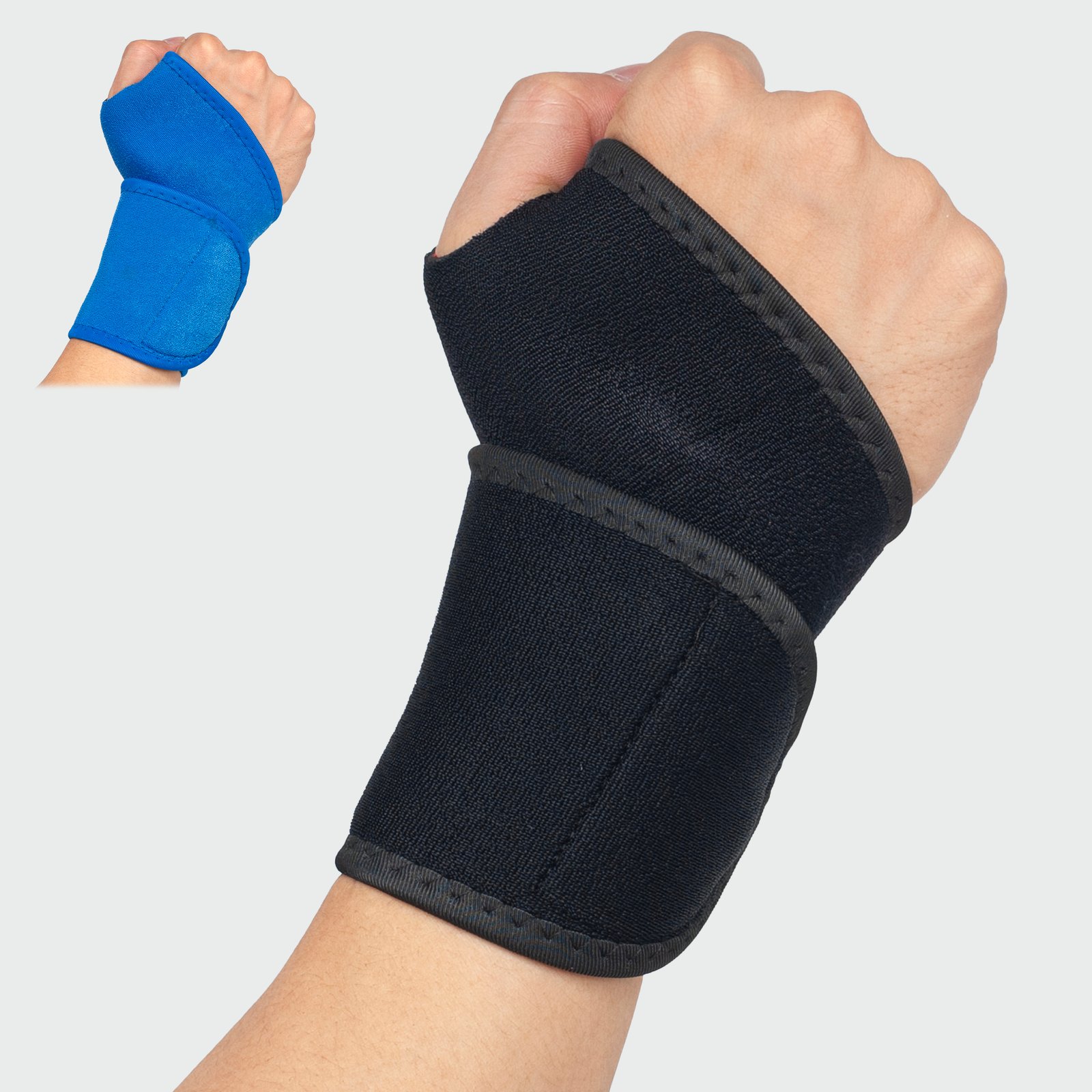Working in a construction setting may sometimes require overextension or overusing your body, leading to majority of the musculoskeletal injuries. Construction sites are considered the bustling centres of activities, involving skilled workers to build the foundation of the cities and infrastructure. However, the construction setting or environment comes with a number of risks and challenges, making it one of the most hazardous industries.
Among these challenges, facing musculoskeletal injuries is common hazards, faced by construction workers. At construction sites, injuries result from repetitive actions, prolonged physical exertion, lifting heavy weights, awkward postures, and other factors, causing injuries to the bones, muscles, tendons, and ligaments.
This comprehensive guide delves deep into the common musculoskeletal injuries resulting from construction work. Understanding the common risks and challenges at the construction site enables you to avoid the chances of injuries. At the same time, we also come up with potential safety solutions or measures, suggested by experts, helping you avoid the chances of musculoskeletal injuries and other dangers at your construction site. So, let’s start our discussion here;
Table of Contents
ToggleCommon injuries associated with the construction work
Construction work requires repetitive actions, prolonged physical activities, and many other actions that may bring you at potential risk of injuries. These injuries are usually related to bones, muscles, tendons, and ligaments. Some of the commonly found injuries in construction work or environment are listed below:
1) Back strains and sprains
In the construction industry or environment, back strains and sprains are considered the most prevalent injuries. The injury is usually found in workers who are regularly involved in bending, twisting, and lifting heavy weights at construction sites. Inadequate rest during the job, poor ergonomics, and improper lifting techniques are the common factors putting excessive pressure on the lower back, causing sprains or strains.
For those construction workers, it is suggested to use lumbar or back support braces. Wearing lumbar support braces helps reduce pressure on the lower back and improve posture. Thus, they help aid recovery following a back strain or sprain or minimise the risk of developing such injuries on construction sites.
2) Herniated disc
A herniated disc is another common issue found in construction work. Workers who are involved in lifting heavy loads at the construction site are more prone to face herniated discs. The condition occurs when the inner soft material of a spinal disc is pushed out through the outer layer. The condition results in pain and other discomforts. However, based on the intensity of the injury, injurers may also experience some other symptoms.
Wearing back support braces helps support your spine and limit unwanted movements. As well as this, they also help reduce putting excessive pressure on herniated discs. Thus, they help improve recovery and aid healing following an injury.
3) Neck strains
Construction workers involved in prolonged time of looking up, like overhead work, may put excessive strain on the neck. Consequently, the neck muscles become strained and fatigued, leading to neck pain and other discomforts. Wearing neck support braces helps reduce pain and improves posture. Thus, they help with the recovery or healing process following a neck injury.
4) Shoulder injuries
Construction workers who need to handle heavy loads regularly or perform overhead work daily may be more prone to shoulder injuries. Actually, these tasks require repetitive actions and workers may put excessive weight on the shoulders while having bad posture. Thus, the task may increase the risk of shoulder-related injuries among which tendinitis, rotator cuff tear, and impingement syndrome are common. Wearing shoulder support braces provides compression to the injured shoulders, helping reduce pain and improving mobility.
5) Carpal tunnel syndrome
Many construction works that require hammering, sawing, drilling, grasping, carrying objects, and lifting heavy objects, may put excessive pressure or strain on the wrist or median nerve, causing carpal tunnel syndrome. Carpal tunnel syndrome is a condition that occurs when the median nerve is compressed. The common symptoms may include pain, numbness, tingling sensation, and weakness around the wrist joint. Many construction workers are recommended to wear wrist support braces to reduce pressure on the median nerve, helping reduce the chances of carpal tunnel syndrome.
6) Knee injuries
Construction workers who require performing actions, including kneeling, squatting, and climbing are more susceptible to knee injuries. As well as this, workers who are required to work on uneven surfaces may also face knee problems. Prolonged exposure to these actions or requirements may lead to injuries, including ligament tears, patellar tendinitis, and knee strains.
Wearing knee support braces helps speed up recovery following a knee injury. At the same time, these braces may also help reduce putting excessive pressure on the knee joints and support them. Thus, they are best at minimising the risks of knee-related overuse injuries.
Safety solutions to prevent injuries at construction sites
In order to prevent injuries and other dangers at the construction site, implementing safety is crucial. It helps keep construction staff or labours protected from injuries, leading to a good productivity level.
1) Proper training and safety awareness
It is the responsibility of site management to provide labours or construction workers with proper training and safety awareness. Giving proper training helps in performing lifting, bending, and all other actions carefully. On the other hand, following up on safety awareness helps reduce the risks of dangers on the site.
2) Personal protective equipment, PPE
Whenever it is necessary, you must wear personal protective equipment while performing your duties. These personal protective equipment or wearables may include gloves, caps, helmets, safety shoes, glasses, jackets, supportive garments, and others.
3) Fall prevention and protection
If you are working on uneven surfaces or at height, the risks of falling are higher. Ensure that you are working while using all the safety equipment on the height and have proper training on how to work on uneven surfaces. It will keep you protected from falling during your job.
4) Regular maintenance of construction equipment
Construction equipment or machines need proper maintenance as any error or malfunction in equipment or machine may bring you danger. Ensure that the construction equipment or machines are well organised or maintained to enhance performance and reduce the chances of accidents at the construction site.
5) Do not overuse your body
Overusing your body at the construction site may be harmful to you. Performing repeated actions while overusing your body may put excessive pressure or strain on your body parts, causing overuse injuries. These injuries when ignored or not treated properly may lead to serious problems that may take longer to heal. So, always listen to your body and take frequent breaks to keep yourself harm-free at the construction site.
6) Learn proper lifting techniques
Many construction workers require lifting objects to perform their duties. Improper lifting may put extra strain or pressure on the muscles, joints, ligaments, or tendons, causing overuse injuries. Ensure that you have learnt proper lifting techniques before starting your duty sessions.
7) Consulting with healthcare professionals
Construction workers are also advised to consult their healthcare professionals regularly and work under their guidance. Whenever you feel pain and any other discomforts during or after your duty session, you better not ignore them and immediately consult your healthcare professionals instead. Follow their instructions and get back to work when they allow you to do so.
The bottom line
Construction work comes as demanding laborious tasks. Construction workers need to perform hard or challenging tasks throughout their sessions and these tasks may include lifting objects, performing repetitive actions, kneeling, bending, squatting, holding objects, walking and standing for a prolonged time. All these actions when not performed carefully may bring you serious injuries. You must wear the protective equipment, mentioned above, according to your needs to treat the injuries or reduce the chances of developing injuries. At the same time, you must also follow the given safety solutions or measures to keep yourself protected during your duty sessions at construction sites.























